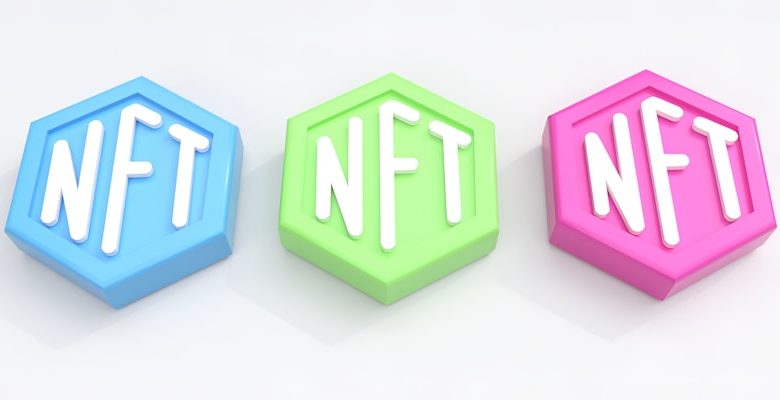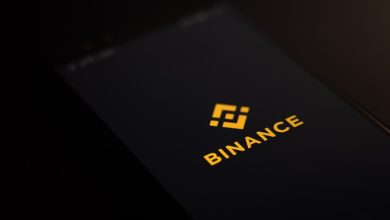How NFTs Are Influencing the Development of Altcoins

- The Rise of NFTs in the Cryptocurrency Market
- Exploring the Relationship Between NFTs and Altcoins
- How Non-Fungible Tokens are Shaping the Future of Alternative Cryptocurrencies
- The Impact of NFTs on the Value and Perception of Altcoins
- NFTs as Catalysts for Innovation in the Altcoin Space
- Navigating the Intersection of NFTs and Altcoins: Opportunities and Challenges
The Rise of NFTs in the Cryptocurrency Market
The rise of non-fungible tokens (NFTs) in the cryptocurrency market has been a significant factor influencing the development of altcoins. NFTs have gained popularity as a unique form of digital asset that represents ownership of a specific item or piece of content on the blockchain. This has opened up new opportunities for creators, artists, and collectors to buy, sell, and trade digital assets in a secure and transparent manner.
With the increasing demand for NFTs, many altcoins have started to integrate NFT functionality into their platforms. This has led to a surge in the number of altcoins offering NFT-related services, such as NFT marketplaces, NFT tokenization, and NFT gaming platforms. As a result, altcoins that are associated with NFTs have seen a rise in value and popularity among investors and users.
Furthermore, the rise of NFTs has also brought attention to the potential use cases of blockchain technology beyond just cryptocurrencies. NFTs have demonstrated the ability to revolutionize various industries, such as art, music, gaming, and real estate, by providing a decentralized and secure way to verify ownership and authenticity of digital assets.
Exploring the Relationship Between NFTs and Altcoins
NFTs have been making waves in the cryptocurrency world, with their unique ability to represent ownership of digital assets. This has sparked interest in the relationship between NFTs and altcoins, as investors look for new ways to diversify their portfolios.
One way in which NFTs are influencing the development of altcoins is through the creation of new markets. As more people buy and sell NFTs, they are also looking for ways to use their digital assets to invest in other cryptocurrencies. This has led to an increase in the trading volume of altcoins, as investors see them as a way to capitalize on the growing popularity of NFTs.
Another aspect of the relationship between NFTs and altcoins is the potential for collaboration. Some altcoin projects are exploring ways to integrate NFT technology into their platforms, in order to create new opportunities for users. This could lead to an increase in the utility of altcoins, as they become more than just a means of exchange.
Overall, the relationship between NFTs and altcoins is still evolving, but it is clear that there is potential for these two technologies to complement each other. As the cryptocurrency market continues to grow and innovate, we can expect to see even more connections between NFTs and altcoins in the future.
How Non-Fungible Tokens are Shaping the Future of Alternative Cryptocurrencies
Non-fungible tokens (NFTs) have been making waves in the world of cryptocurrencies, offering unique digital assets that cannot be replicated or exchanged on a like-for-like basis. These tokens are revolutionizing the way we think about ownership and value in the digital realm, opening up new possibilities for alternative cryptocurrencies to emerge and thrive.
NFTs are shaping the future of altcoins by providing a new avenue for creators and investors to tokenize assets and create digital scarcity. This unique feature has the potential to drive demand for altcoins that are linked to specific NFTs, creating a new ecosystem of digital assets that are backed by tangible value.
As NFTs continue to gain popularity and mainstream adoption, we can expect to see a proliferation of altcoins that are built on the principles of digital scarcity and unique ownership. These altcoins will offer investors a new way to diversify their portfolios and participate in the growing NFT market, driving innovation and growth in the cryptocurrency space.
In conclusion, the rise of non-fungible tokens is reshaping the future of alternative cryptocurrencies, offering new opportunities for creators, investors, and enthusiasts to participate in the digital economy. By leveraging the unique properties of NFTs, altcoins are poised to play a significant role in shaping the future of blockchain technology and decentralized finance.
The Impact of NFTs on the Value and Perception of Altcoins
Non-fungible tokens (NFTs) have been making waves in the cryptocurrency world, impacting not only the value of popular coins like Bitcoin and Ethereum but also influencing the development and perception of alternative coins, or altcoins. NFTs are unique digital assets that represent ownership of a specific item or piece of content, often in the form of art, music, or collectibles.
As the popularity of NFTs continues to grow, they are creating new opportunities for altcoins to differentiate themselves in a crowded market. Altcoins that are integrated with NFT platforms or offer unique NFT-related features are gaining attention from investors and enthusiasts alike. This increased interest can lead to a rise in the value of these altcoins as demand for them grows.
Furthermore, the use of NFTs can enhance the utility and functionality of altcoins, making them more versatile and appealing to a wider audience. By leveraging NFT technology, altcoin projects can create new use cases and applications that attract users looking to explore the possibilities of blockchain technology beyond traditional cryptocurrencies.
NFTs as Catalysts for Innovation in the Altcoin Space
NFTs have emerged as a powerful catalyst for innovation in the altcoin space, driving the development of new and exciting projects that leverage the unique properties of non-fungible tokens. These digital assets have opened up a whole new world of possibilities for cryptocurrency developers, enabling them to create tokens that represent ownership of digital or physical assets, digital collectibles, and much more.
By utilizing NFTs, altcoin projects are able to differentiate themselves from the competition, offering users unique and valuable digital experiences that go beyond simple transactions. This has led to a surge in creativity and experimentation within the altcoin space, as developers explore new ways to harness the power of non-fungible tokens to create innovative and engaging products.
One of the key ways in which NFTs are influencing the development of altcoins is through the creation of decentralized marketplaces where users can buy, sell, and trade digital assets securely and transparently. These marketplaces leverage blockchain technology to ensure that ownership of NFTs is secure and verifiable, allowing users to confidently participate in the burgeoning digital economy.
Navigating the Intersection of NFTs and Altcoins: Opportunities and Challenges
As NFTs continue to gain popularity in the crypto space, their intersection with altcoins presents both opportunities and challenges for investors and developers alike.
One of the main opportunities that arise from the merging of NFTs and altcoins is the potential for increased liquidity and value creation. By tokenizing assets through NFTs and integrating them with altcoin ecosystems, developers can unlock new revenue streams and create a more dynamic marketplace for digital assets.
On the other hand, this intersection also brings challenges such as regulatory scrutiny and market volatility. As NFTs and altcoins become more intertwined, regulators are paying closer attention to the space, which could lead to increased oversight and compliance requirements.
Furthermore, the volatile nature of altcoins can impact the value of NFTs, creating uncertainty for investors and developers. Finding the right balance between these two emerging technologies is crucial for sustainable growth and long-term success in the crypto market.



